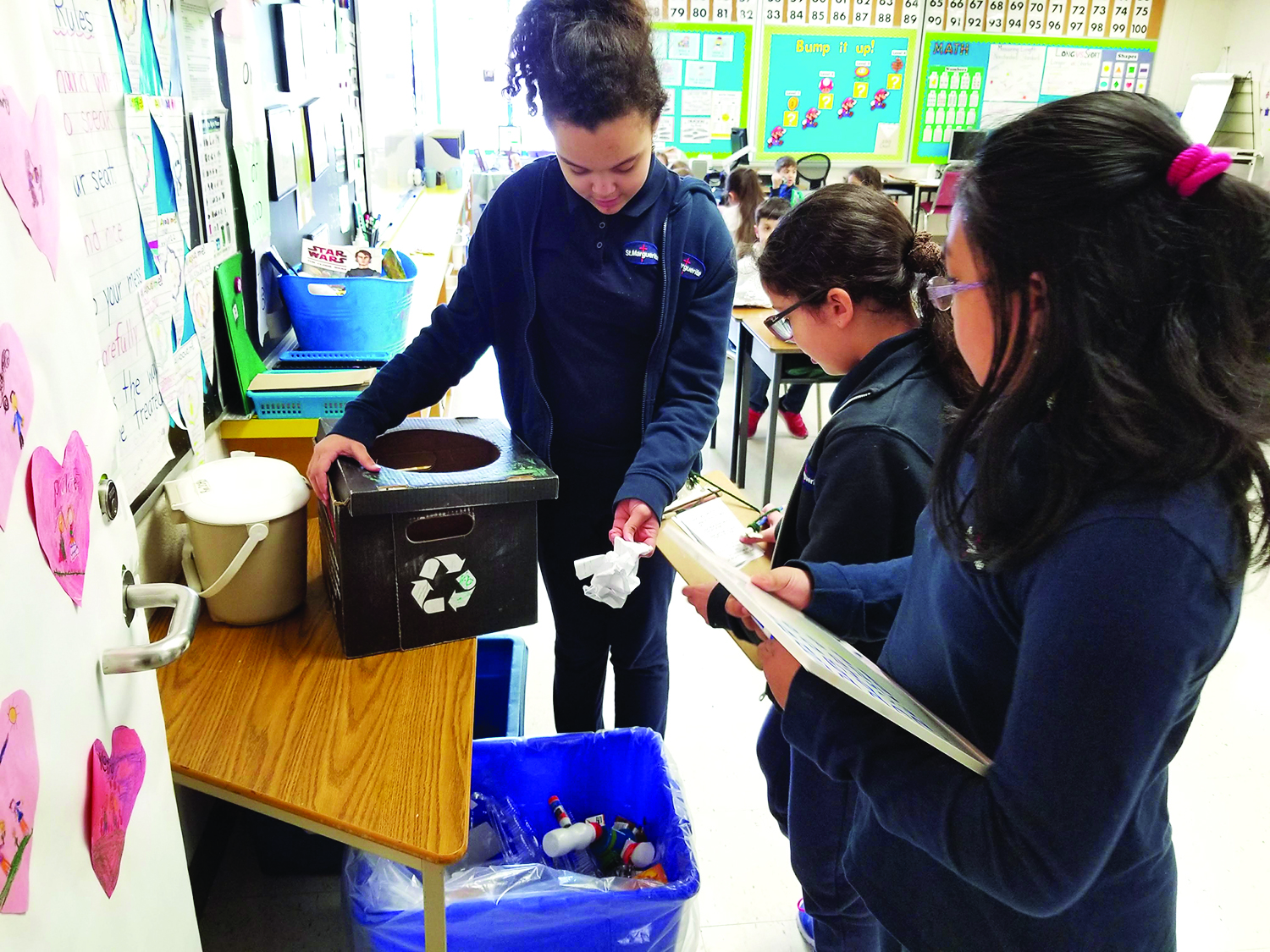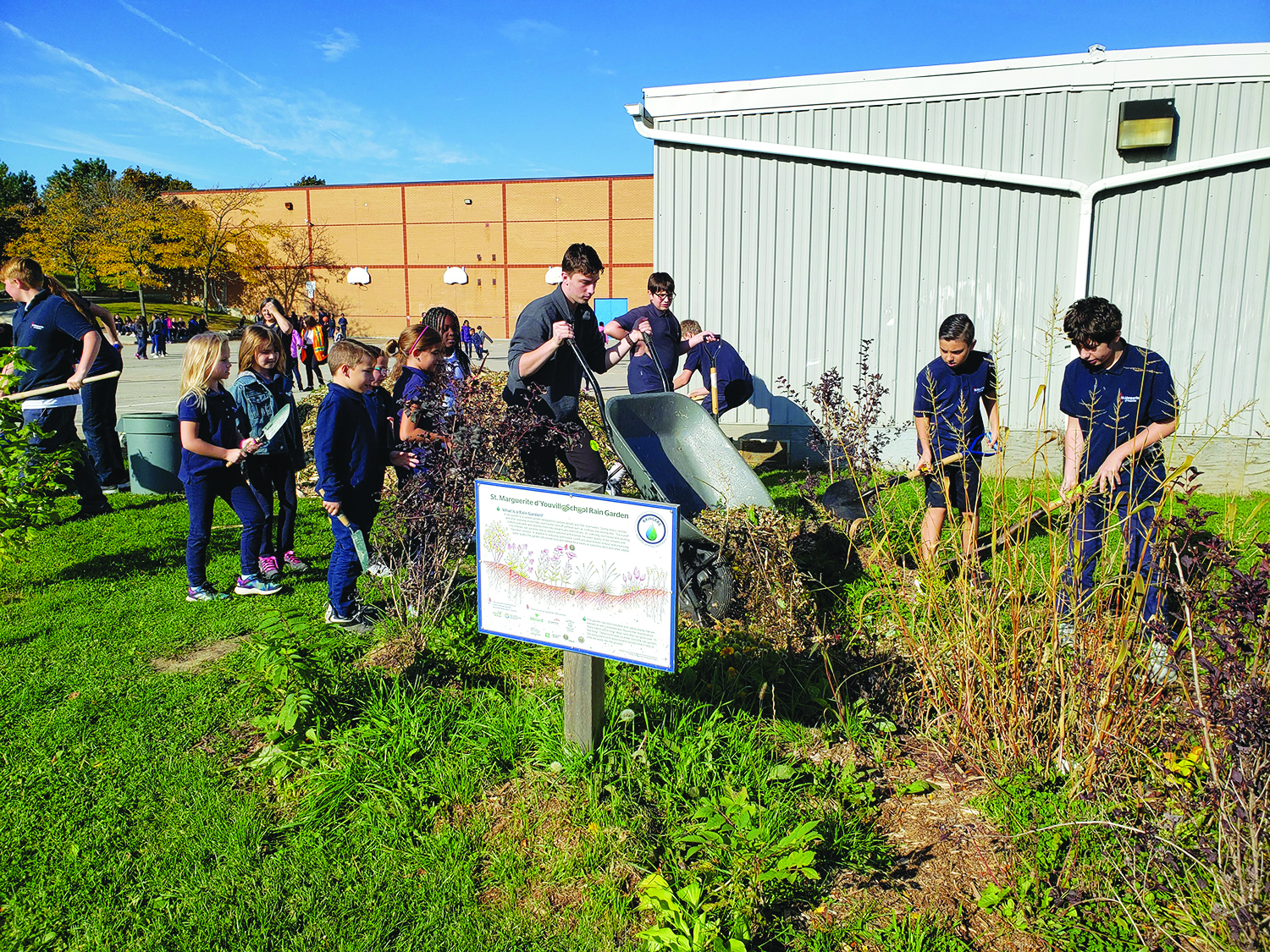Environmental Education and Christian Schools
Schools across Canada have increasingly emphasized environmental education in recent years, teaching students to work toward healthy local and global communities for both present and future generations (Government of British Columbia 2019; Alberta Council for Environmental Education 2019; Ontario Ministry of Education 2019). Catholic schools have a unique responsibility to promote environmental sustainability given the creation-care mandate of the Christian faith—God made the world for humanity, and humanity must care for the world. The leadership of the Catholic Church has emphasized the importance of this issue in recent years: Pope Francis highlighted the alignment of an environmental ethic with the Catholic faith in the third encyclical letter of his pontificate, Laudato Si’ (2015), in which he issues an “urgent appeal . . . for a new dialogue about how we are shaping the future of our planet.”
Kensler (2012) argues in Ecology, Democracy, and Green Schools: An Integrated Framework that successful environmental stewardship initiatives in k–12 education require whole-school systems. Research indicates that the success of a school’s environmental efforts requires commitment from its leaders in particular, who play a crucial role in converting stakeholders’ environmental ideals into best practices (Birney and Reed 2009; Barr 2011). It is the alignment of sustainability values within the school, culture, curriculum, and facility operations that enables whole-school commitment to environmental stewardship.
The Greenest School in Canada
St. Marguerite d’Youville Catholic Elementary School was designated “The Greenest School in Canada” in 2015 by the Canada Green Building Council, a notfor-profit organization promoting sustainable-building and community-development practices across Canada (Hamilton-Wentworth Catholic District School Board 2015; Canada Green Building Council 2019). St. Marguerite achieved this honour by reducing its waste by 90 percent, focusing on recycling, and committing to composting. Plastic water bottles and plastic bags are banned. Parents are asked to pack litterless snacks and lunches. Organics are put in compost bags and recyclables in blue boxes. Since enrolling in EcoSchools, a voluntary environmental-certification program (EcoSchools Canada 2019) fourteen years ago, the school has reduced its waste from thirteen garbage bags a day to one.
Environmental sustainability is valued in the culture of the whole school community. At all levels, students take active roles. Grade 2 students, for instance, serve as “Busters,” checking each classroom throughout the school at noon and “busting” classes that have made mistakes in their recycling and reuse commitments. Each classroom contains recycling bins as well as “Good On Other Side” boxes, which store paper that is still useful; Busters give out tickets for improperly stored items. Busters also monitor and chart each classroom’s energy use, giving tickets to classrooms that have not turned off computer monitors and lights when not in use. The whole school participates in a point-gathering competition in which Buster tickets count against each classroom’s total, giving students an added incentive to avoid getting busted. Student leaders have also spoken at various events about their role in the school’s environmental efforts, including at a TED Talk at the Youth Eco Summit at Mohawk College in Hamilton.
 Recycling and creation care in action
Recycling and creation care in action
In addition to the principal’s leadership, one teacher at St. Marguerite is particularly committed to the task of creating a green school; this “ecology champion” is identified by the other teachers as the point person for all matters concerning environmental efforts. The school also has strong support from stakeholders, including the school administration, teachers and staff, students, parents, the Catholic Church, volunteers, the neighbourhood, and the city. Once a month, the school runs special alternativetransit days during which staff and students (with parental support) use environmentally friendly modes of transportation, such as walking or biking, to get to school.
St. Marguerite maintains an outdoor garden in which multiple school stakeholders are involved: the children plant in the spring; parents and neighbours donate plants and flowers; and children, parents, and community members all take part in watering. If the school needs to remove a tree (such as for construction), another native tree is planted.
St. Marguerite’s faith is integral to its commitment to environmentalism. Quotations from Laudato Si’ and banners for the current year’s Joyful Disciples theme, as well as those from past years (such as Renewing the Faith or Faith in Action), are displayed throughout the school, highlighting the connection between living out one’s faith and care for the earth. This faith is holistic—the school community’s initiatives are designed to care for everyone in every way possible. The school has a uniform closet where outgrown uniforms are made available to all students, which is particularly helpful for students of lower socioeconomic status. Several of the school’s initiatives connect physical well-being and care for the environment: “If it makes our earth better, it makes us better.” Every year the school holds a Healthy Eco Fair, which draws hundreds of participants from the Hamilton area, including the mayor and bishop. Students with diverse abilities help with the school’s nutrition program, delivering food baskets containing snacks for every student to the classrooms. The school’s commitment to providing heathy lunches and snacks for each student not only keeps junk food away from students’ diets but also reduces plastic garbage from unhealthy packaged snacks and fast food. After completing a project measuring the sugar content of drinks, students introduced a policy prohibiting juice boxes at the school. The school also has designated outdoor fitness times to promote students’ physical health.
What Makes this Work?
The full commitment of teachers has been necessary for the success of the school. The principal emphasized that St. Marguerite’s creation care initiatives are a team effort, initiated by both students and teachers and supported by the entire school community. As one staff member insisted, “You can’t do this sort of thing with just one committed person. Everyone has to buy in.”
 St. Marguerite d’Youville Catholic School: The Greenest School in Canada
St. Marguerite d’Youville Catholic School: The Greenest School in Canada
Since school unity is foundational to the sustainability of ecological stewardship initiatives, St. Marguerite’s environmentalism and its efforts to build community in other areas of the school are mutually reinforcing. The staff at St. Marguerite believe that the “Eat Together” initiative, for instance, has been central to the success of the environmentally sound school culture. Students share meals inside the school. Their food is waste-free as much as possible, and no food is permitted on the school grounds during recess, to minimize littering and to avoid attracting pests. Students and staff also eat the same school snacks provided through the nutrition program. The school nurtures a culture of hospitality as well: the leaders are out in front of the school as students arrive and depart, where they also talk with neighbours who live near the school. St. Marguerite’s outdoor garden creates a good network with members of the surrounding community, who appreciate the attractive gardens and native trees that are planted and maintained each year, which builds their support for the school. Community members attend the Healthy Eco Fairs and other special events. Many volunteers in the neighbourhood are quite attached to the school, the children, and the faculty and staff.
The dedication of St. Marguerite’s principal—for which she received the Award of Merit for Distinguished Service to Catholic Education from the Hamilton-Wentworth Catholic District School Board in 2018 (Hamilton-Wentworth Catholic District School Board 2018)—has been central to the school’s success. She reports that she wanted to be at this school because it was already established as a green school. In her five years as principal, she has encouraged involvement from all members of the school community: students join an eco-team; nursing students work on healthy initiatives and projects with the school, such as the Healthy Action Team. Teachers who have worked at other schools report observing a higher level of staff involvement at St. Marguerite compared to other schools. The principal sees environmental education and practice as a way to give students hope by empowering them with the awareness and ability to participate in the renewal of the earth.
Staff members emphasized the importance of kindergarten in setting the stage for the rest of students’ school experience, insisting that a robust stewardship program in the early years is critical. Students are taught to practice environmentally sustainable habits in the classroom—such as recycling paper, turning off lights, and not bringing single-use plastics to school—from the beginning of their school years at St. Marguerite.
 Engaging the community in care for the environment
Engaging the community in care for the environment
Key Takeaways
- The Christian mandate to care for creation means that Christian schools have a unique responsibility to promote environmental stewardship.
- It takes everyone involved in the school community to make a school “green”; the task requires much effort from a wide variety of stakeholders.
- Encouraging students to take active roles in green school projects deepens their understanding of and desire to pursue environmental sustainability.
- Inviting stakeholders to collaborate with students and staff on “greening” projects encourages the community’s support for environmental initiatives. All-school community garden
- Promoting physical health and encouraging environmental stewardship are complementary goals.
- A shared commitment to environmentalism and strengthening school community through other initiatives are mutually reinforcing: while a team mindset is a necessary foundation for whole-school stewardship initiatives, improving the school’s environmental sustainability also acts as a shared goal around which students, staff, and the wider community can unite.
 All-school community garden
All-school community garden





